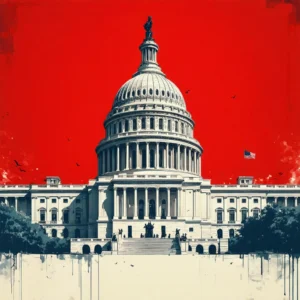
Introduction to Unprecedented Change
In Washington, D.C., leaders drive dramatic changes that reshape the federal labor landscape. Today, officials implement bold measures that transform how government agencies serve the American people. Moreover, the Beltway Buzz team investigates these shifts, explaining each nuance. Transitional phrases abound as the narrative unfolds with clarity and purpose. Furthermore, policy experts explain that the recent downsizing of the Federal Mediation and Conciliation Service (FMCS) sends a strong message regarding administrative efficiency. In response, the administration retains only 15 dedicated employees after a drastic cut from 220. Consequently, stakeholders experience a significant impact on labor dispute resolutions and commerce, while business leaders prepare for emerging realities.
FMCS Downsizing and Administrative Shifts
Government decisionmakers implement bold reforms. A table below illustrates staffing changes at FMCS over recent years:
| Year | Number of Employees |
|---|---|
| 2024 | 220 |
| 2025 | 15 |
Officials champion these reforms while insisting that improvements occur across federal bureaucracy. Additionally, they assert that new policies foster agility and responsiveness. Transitional words such as “however” and “accordingly” guide the reader through every step of the process.
Personnel Overhaul Across Agencies
Agency leaders pursue expedited personnel changes. For example, a three-judge panel rulings allow President Trump to remove a Biden-appointed NLRB member. Moreover, a decision from the U.S. Court of Appeals for the District of Columbia Circuit clears the way for leadership transitions. Furthermore, the Equal Employment Opportunity Commission secures Andrea Lucas for another term. In turn, the Office of Federal Contract Compliance Programs welcomes Catherine Eschbach as a director immediately. These changes, explained through clear bullet points, include:
- NLRB member removal hearing moves forward.
- EEOC sustains Andrea Lucas with a five-year term.
- OFCCP appoints Catherine Eschbach without Senate confirmation.
Additionally, experts note that these staffing changes aim to boost the workforce’s overall capability and speed. Therefore, regulatory bodies target efficiency while challenging outdated policies.
Expanding Review Processes
In addition, officials initiate comprehensive reviews of submitted affirmative action plans. They focus on identifying potential discrimination and guaranteeing compliance. Alongside these measures, the administration gathers feedback from industry leaders. Sequentially, government and business leaders collaborate to secure fair practices. Moreover, the government’s swift response provides a roadmap for change during summer meetings, which occur in June and July. Consequently, workers and businesses experience direct impacts from these emerging priorities.
Legislative and Regulatory Developments
Legislators appear proactive in reshaping labor laws. The House Committee highlights opportunities to amend the Fair Labor Standards Act (FLSA) during a recent hearing. Speakers explain that outdated provisions hinder modern economic growth. Moreover, they underscore multiple policy recommendations such as simplifying “regular rate” calculations and offering options like comp time instead of cash overtime pay. In addition, participants advocate for key pieces of legislation that modernize worker rights. The recommendations include:
- Modern Worker Empowerment Act
- Modern Worker Security Act
- Reactivation of the Payroll Audit Independent Determination (PAID) program
Notably, legislative refinements promise to offer practical solutions while ensuring that policies align with the realities of a modern workforce. Additionally, the emphasis on worker empowerment generates strong bipartisan support.
Workplace Safety and Disability Policy Enhancements
Government strategists also target workplace safety and disability employment policies. For instance, the Occupational Safety and Health Review Commission sees Jonathan Snare receiving a nomination, which experts believe will fortify safety oversight. Similarly, Marco Rajkovich Jr. secures a nomination for the Federal Mine Safety and Health Review Commission. In addition, the Department of Labor nominates Julie Hocker as assistant secretary for disability employment policy, and she champions initiatives that boost inclusion. Table 1 summarizes key nominations:
| Agency | Nominee | Relevant Focus |
|---|---|---|
| NLRB | Gwynne Wilcox (removed) | Labor Dispute Oversight |
| EEOC | Andrea Lucas | Equal Opportunity |
| OFCCP | Catherine Eschbach | Affirmative Action & Compliance |
| DOL Disability Policy | Julie Hocker | Inclusion & Employment |
Furthermore, the administration promises to enforce these policies actively, and stakeholders applaud the proactive upgrades.
Immigration and Parole Program Adjustments
This week, officials terminate the CHNV parole programs. The Department of Homeland Security targets individuals from Cuba, Haiti, Nicaragua, and Venezuela. In an assertive effort, the government directs affected individuals to leave the country by April 24, 2025, unless the Secretary of Homeland Security permits exceptions. Meanwhile, officials provide clarity regarding exemptions for those with Temporary Protected Status or participants in parole programs for Ukraine and Afghanistan. This decision, explained in detail through sequential reasoning, reflects efforts to intensify immigration law enforcement. Additionally, the administration cites interior enforcement challenges and security concerns. These adjustments create a ripple effect that impacts various communities, while policymakers detail the new regulations in public forums.
Historic Court Decisions and Democratic Processes
The narrative continues with a look at historic shifts in American political representation. On March 26, 1962, the Supreme Court rendered the groundbreaking Baker v. Carr decision. This ruling allowed judges to address legislative apportionment disparities. As a result, the principle of “one person, one vote” transforms political districting. Moreover, the case study receives detailed analysis by legal experts who describe the intense deliberations among justices. In a dramatic twist, Justice Charles Evans Whittaker recused himself after suffering severe stress. Notably, this landmark ruling triggered a cascade of malapportionment cases that reframe electoral fairness. Consequently, political advocates and legal analysts celebrate the case as a turning point in representative democracy.
Context and Future Implications
When considering the current reforms, analysts draw parallels between past legal decisions and today’s regulatory transformations. They compare the dynamic approach of modern agency adjustments with the pioneering spirit of historic court cases. Moreover, industry stakeholders predict additional inquiries into federal operations. In the coming months, experts plan to review the administration’s regulatory agenda and assess its effectiveness. The narrative follows a clear trajectory: government officials implement proactive measures, and businesses adapt to emerging guidelines. Today, every decision reverberates across free-flowing commerce and worker rights. Therefore, the future becomes increasingly dynamic and interconnected.
Key Takeaways and Strategic Initiatives
Officials list several strategic initiatives to maintain transparency and drive efficiency. Important points include:
- A comprehensive review of affirmative action plans.
- Revised enforcement strategies in labor and safety policies.
- Ongoing legislative discussions centered on modernizing overdue labor provisions.
Moreover, government representatives and business leaders engage in regular consultations, ensuring a continuous flow of ideas. To summarize, these initiatives set the stage for enhanced performance across agencies and promotion of fair labor practices. Additionally, similar reforms inspire collaboration between public and private sectors.
Conclusion and Looking Ahead
In conclusion, Washington orchestrates a series of unprecedented policy shifts that redefine labor and employment regulations. Leaders manage significant agency personnel changes, enforce new immigration policies, and dive into complex legislative and judicial debates. Consequently, the administration prepares a strategic regulatory agenda that illuminates future directions. Furthermore, each decision impacts business operations, worker rights, and government efficiency. As one follows this dynamic landscape, rapid changes inspire continuous dialogue among stakeholders. In summary, the narrative reflects ambition, resilience, and reform. With clear checkpoints, detailed bullet lists, numbered points, and vivid tables, the story illustrates a period of transformative change while promising new opportunities ahead.




